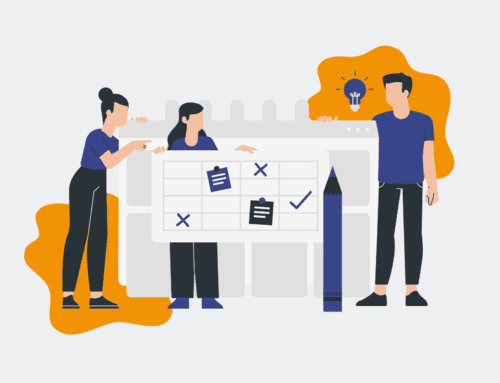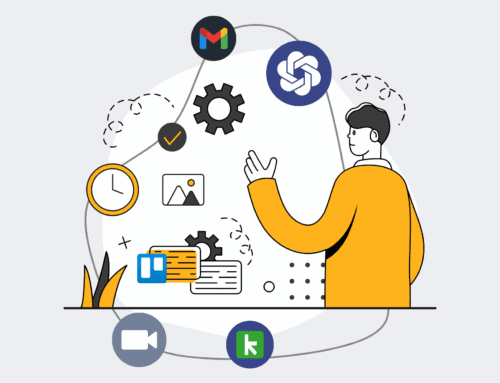A Step-by-Step Guide to Integrating New AI Tools with Your Existing ATS
In today’s competitive talent landscape, leveraging cutting-edge AI tools can provide a significant advantage, but seamlessly integrating them with your established Applicant Tracking System (ATS) is often perceived as a complex challenge. This guide demystifies the process, offering practical, actionable steps for HR leaders and recruitment professionals to enhance their talent acquisition strategies without overhauling their existing infrastructure. By thoughtfully integrating AI, you can automate routine tasks, uncover deeper candidate insights, and dramatically improve the efficiency and effectiveness of your hiring pipeline, ensuring 4Spot Consulting’s promise of saving you 25% of your day rings true in your recruitment operations.
Step 1: Assess Your Current ATS & Identify Integration Points
Before introducing any new AI tools, a thorough audit of your current ATS capabilities and limitations is crucial. Understand its API documentation, existing integrations, and any modules that could be enhanced or replaced by AI. Identify critical workflows within your ATS where manual effort or bottlenecks exist, such as resume screening, candidate communication, interview scheduling, or initial candidate scoring. Pinpoint the specific data fields that new AI tools would need to access or update, ensuring data security and compliance are top priorities. This initial assessment forms the bedrock for a successful integration, guiding your choices and preventing potential compatibility headaches down the line.
Step 2: Define Your AI Integration Objectives
Clarity on what you aim to achieve with AI is paramount. Are you looking to improve candidate sourcing accuracy, automate initial screening to reduce time-to-hire, enhance candidate engagement through AI chatbots, or gain predictive insights into turnover risk? Clearly defined, measurable objectives will dictate which AI tools are most appropriate and how their success will be evaluated. For example, if your goal is to reduce screening time by 30%, you’ll focus on AI tools specializing in resume parsing and intelligent candidate matching. Setting these objectives early ensures that AI integration is a strategic investment, not just a technological adoption for its own sake.
Step 3: Research & Select Compatible AI Tools
With your objectives and ATS assessment in hand, begin researching AI tools that align with your needs and technical environment. Look for solutions that offer robust API connections, clear integration guidelines, and a track record of successful integrations with popular ATS platforms. Consider AI-powered resume screeners, natural language processing (NLP) tools for job description optimization, intelligent interview scheduling platforms, or AI-driven candidate engagement chatbots. Prioritize tools that can seamlessly connect via platforms like Make.com, ensuring a low-code approach that can be managed effectively. Evaluate vendor reputation, support, and pricing models to find a solution that offers the best long-term value and scalability for 4Spot Consulting’s strategic approach.
Step 4: Plan the Integration Strategy & Data Flow
Once you’ve selected your AI tools, develop a detailed integration strategy. This involves mapping out the precise data flow between your ATS and the new AI system. Determine which data points will be exchanged, the frequency of data synchronization, and how potential data conflicts or discrepancies will be handled. Consider using an integration platform as a service (iPaaS) like Make.com to orchestrate complex workflows, ensuring data integrity and automating triggers between systems. Outline the security protocols, access permissions, and compliance measures required to protect sensitive candidate data throughout the integration process. A clear, well-documented plan minimizes risks and streamlines deployment, adhering to the OpsMesh framework for a robust automation strategy.
Step 5: Implement and Test the AI Integration
Execute the integration plan in a phased approach, starting with a pilot or test environment to minimize disruption. Connect the AI tool to your ATS using the defined APIs or iPaaS platform. Thoroughly test every aspect of the integration, from data input and processing to output and synchronization. Verify that candidate profiles are updated correctly, AI-generated insights are accurately displayed, and automated workflows trigger as expected. Pay close attention to error handling and data validation. Involve key stakeholders from HR, IT, and recruitment in the testing phase to gather feedback and identify any unforeseen issues before rolling out the integration to the wider team, ensuring a smooth transition and early problem identification.
Step 6: Train Your Team & Optimize Performance
A successful AI integration isn’t just about technology; it’s about people. Provide comprehensive training to your recruitment team on how to effectively use the new AI tools in conjunction with their existing ATS. Explain the benefits, demonstrate new workflows, and address any concerns about job displacement. Emphasize how AI will augment their capabilities, freeing them from repetitive tasks to focus on strategic candidate engagement. Collect feedback post-launch and iterate on training materials or workflow adjustments. Continuously monitor the AI’s performance, adjusting parameters or refining algorithms to ensure it’s meeting your objectives and delivering maximum value, aligning with 4Spot Consulting’s OpsCare for ongoing optimization.
Step 7: Monitor, Evaluate, and Scale
Integration is an ongoing process. Establish key performance indicators (KPIs) to continuously monitor the impact of your AI tools on recruitment metrics like time-to-hire, cost-per-hire, candidate quality, and recruiter efficiency. Regularly review analytics provided by both your ATS and the AI platform. Use these insights to evaluate the AI’s effectiveness and identify areas for further optimization. As your team becomes more adept and the benefits become clearer, look for opportunities to scale the integration, perhaps by introducing new AI functionalities or extending its use to other stages of the talent acquisition lifecycle. This iterative approach ensures your AI investments continue to yield significant returns and evolve with your business needs.
If you would like to read more, we recommend this article: ATS Automation Consulting: The Strategic Blueprint for Next-Gen Talent Acquisition








